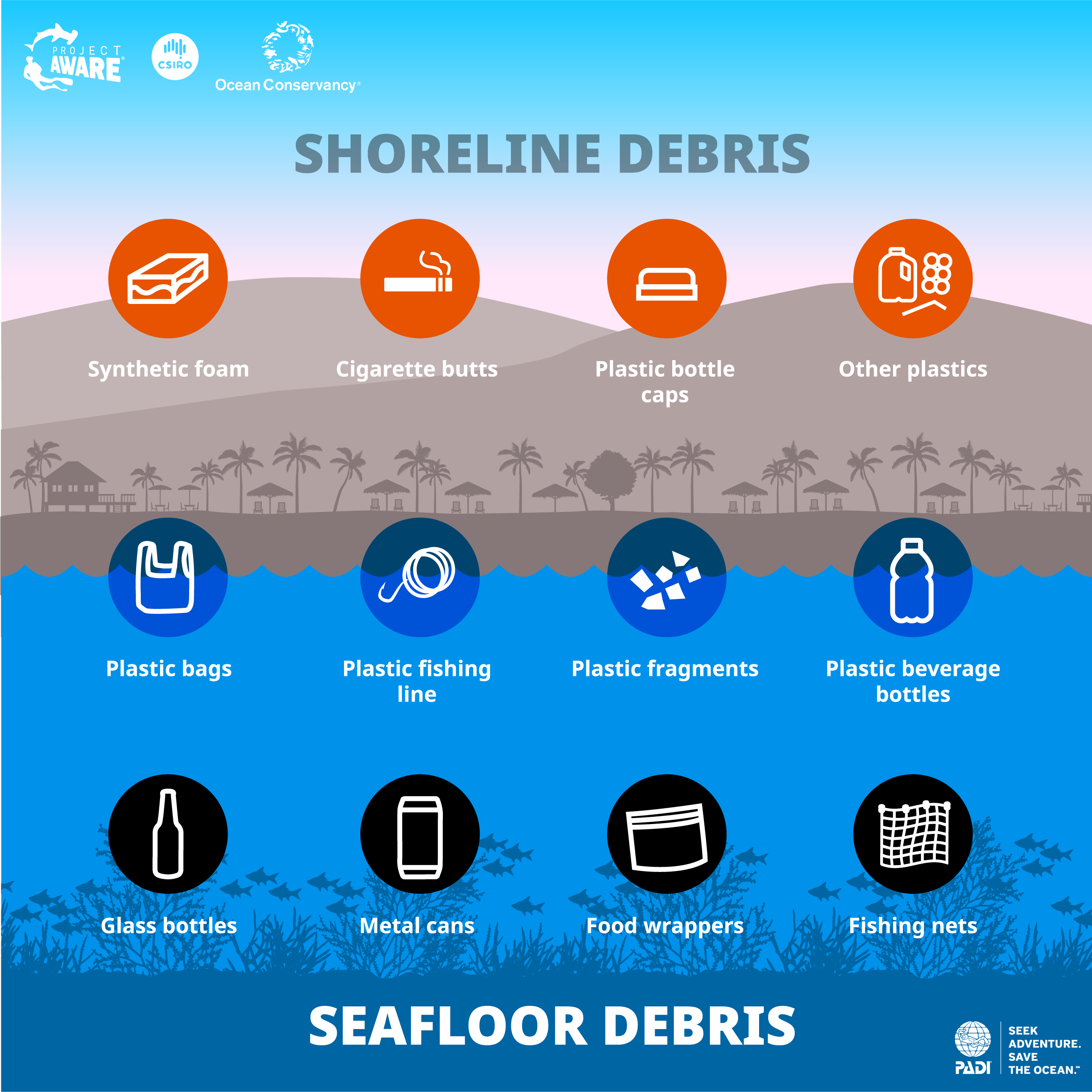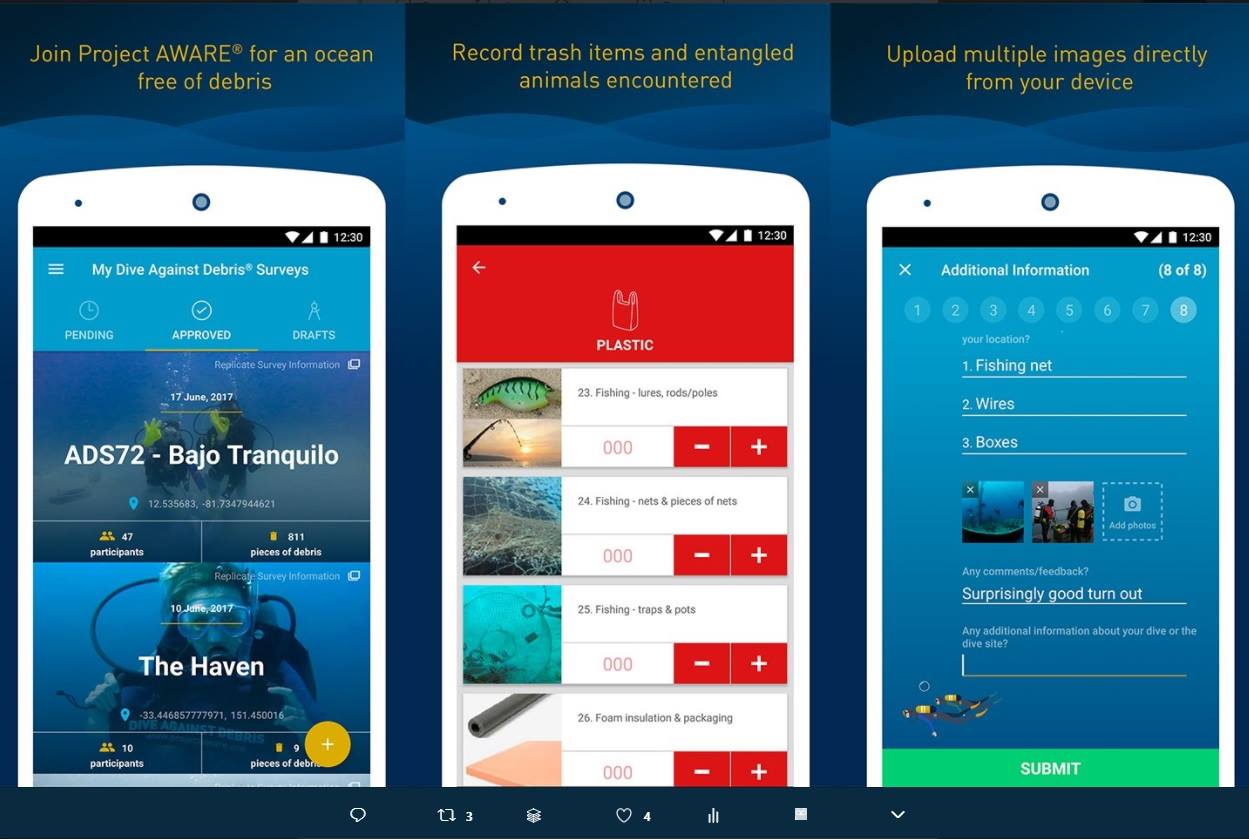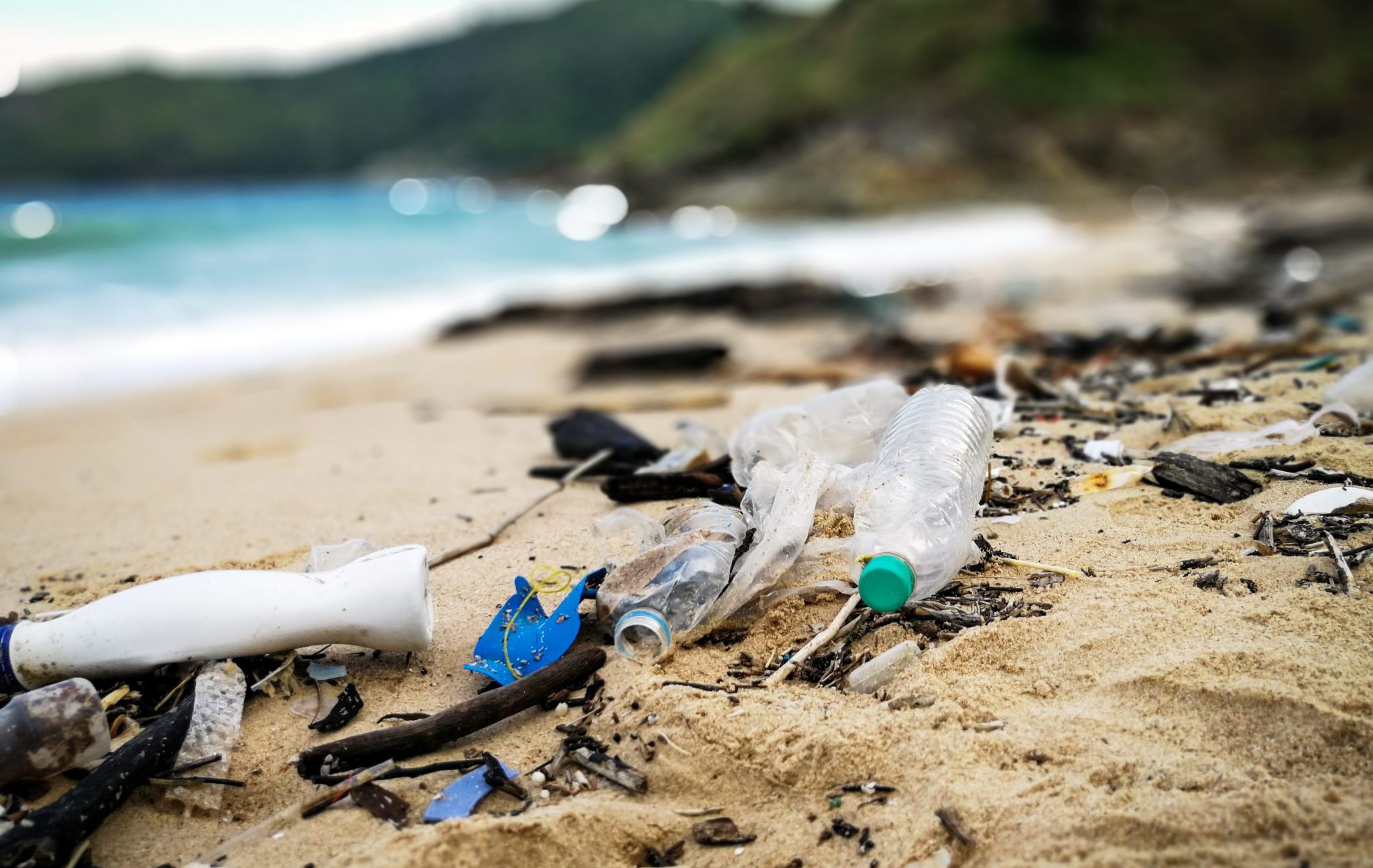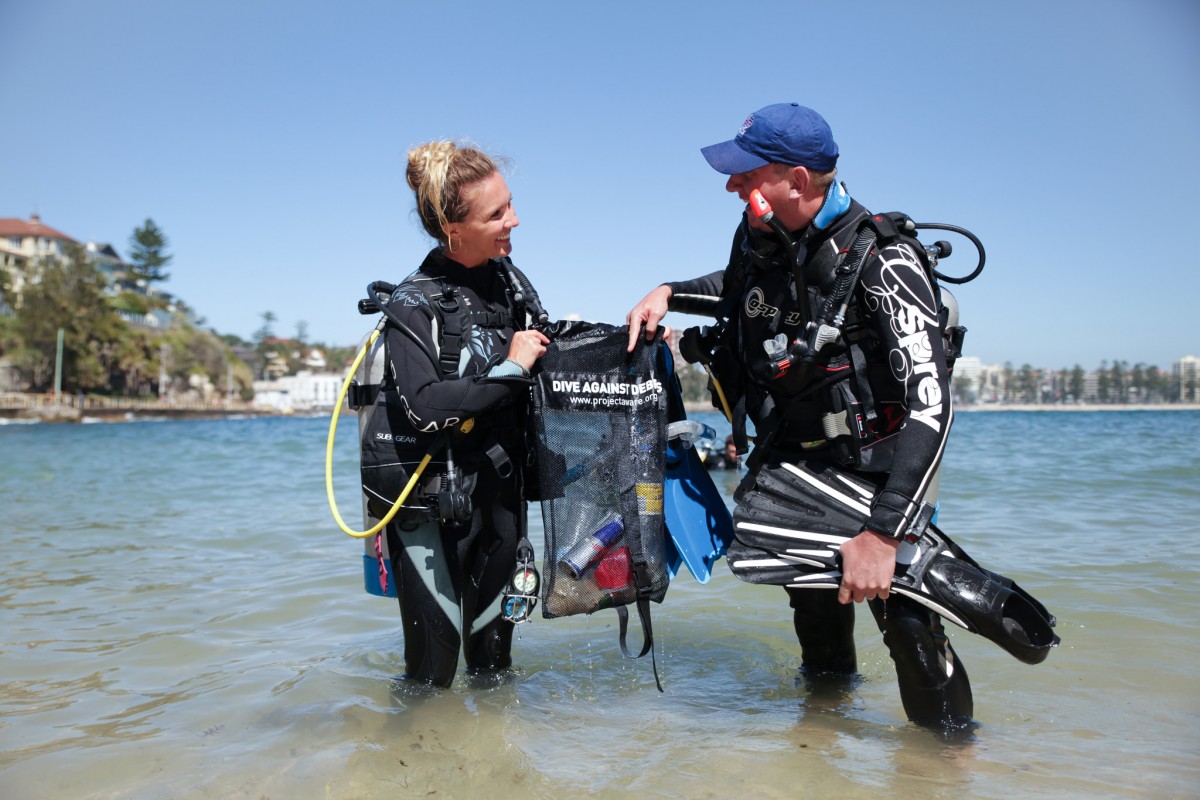Groundbreaking Citizen Science Results with Project AWARE Dive Against Debris Data

PADI divers that have participated in a Dive Against Debris Survey, or taken the Dive Against Debris Speciality Course, have contributed key data – as citizen scientists – to a groundbreaking new study published in Science Direct. The first global analysis of its kind, the study evaluates the relationship between debris found on shorelines and debris found on corresponding seafloors.
The data sets used were obtained directly from Project AWARE’s Dive Against Debris seafloor surveys and Ocean Conservancy’s International Coastal Cleanups along beaches. Danna Moore, Director of Global Operations at Project AWARE, gives us an in-depth look at this fascinating marine debris research – and what it means in the world of ocean conservation.

A general mismatch between shoreline debris and seafloor debris was found, while correlation was found with items that entangle or sink like fishing line and plastic bags.
Question: What does it mean to Project AWARE to be part of this groundbreaking citizen science research study?
Danna Moore: It is such an important milestone for the organization, our community, and marine debris research. This is the first global study of its kind examining the relationship between land and seafloor debris, which will inform future policy solutions on this significant ocean threat. This work is an excellent example of how Project AWARE advances our vision for a return to a clean and healthy ocean – strategically aligning community action with policy change.
Question: What effort was necessary to make this study happen?
Danna Moore: The Dive Against Debris program is the cornerstone of Project AWARE’s clean ocean strategy and our flagship citizen science program. This study is the culmination of almost a decade of advancing that program through the hard work of the Project AWARE team, our partners, and our community. The seafloor data analyzed took 7 years of reporting efforts, totaling 915,430 items during 5,930 citizen science surveys. Each piece of debris reported was because a supporter took action to not only remove, but also report the debris. Each survey went through an internal quality review process to ensure we could advance credible marine debris research. This was truly a collective effort that brought to the surface what’s beneath the waves.
Question: How integral of a role does the Project AWARE App play in enabling this research?
Danna Moore: The app was a critical platform for Dive Against Debris participants to report their data in a quick and easy manner. We launched the app in 2017 and saw a 147% increase in surveys. We are grateful to our donors and partners for providing the funds to help us provide this resource for our citizen scientists.

Turn your smart phone into a citizen science and ocean conservation tool by downloading the free Project AWARE App – and logging the marine debris you find during each Dive Against Debris Survey.
Question: What are some of the key takeaways from the study?
Danna Moore: The research showed a general mismatch between what is located on shorelines and what remains on the seafloor, but finds correlation between land and seafloor pollution for items that entangle or sink, like fishing line, plastic bags, and PET bottles. Ten items which were highly represented among land and seafloor debris mix have common patterns that include beverage associated, plastic material, and designed for single-use.

Single-use plastics, in many different forms, are prevalent on both shorelines as well as seafloors.
Question: What is next for Project AWARE and this study?
Danna Moore: Along with our research partners CSIRO and Ocean Conservancy, we will be releasing two more papers related to the study this year. We will leverage this research to help inform waste management policies to stop debris from entering the marine environment.
Question: Why is it so important that our global community of PADI divers get involved as citizen scientists and make ‘Every Dive a Survey Dive’?
Danna Moore: This study tangibly demonstrates the important role that citizen science programs can play to inform and mitigate environmental pollution. Divers are especially valuable citizen scientists since they are first responders and can act as the underwater eyes for the marine environment. When a PADI diver makes ‘Every Dive a Survey Dive’ they truly make a difference in advancing marine conservation.

A big thanks to all of you who contributed to this important research and ocean cleanup effort, and exemplifying what it means to be a PADI Torchbearer.
Not yet involved? Join PADI in our mission to create a billion torchbearers to seek adventure and save the ocean, by participating in Project AWARE’s flagship citizen science program – Dive Against Debris! You can earn your Dive Against Debris Specialty certification and make ‘Every Dive a Survey Dive’. And remember, avoid single use plastics whenever possible because it’s no secret where they will end up.
Want to learn more about this groundbreaking marine debris research? Read ‘Sink or Swim’ from Project AWARE.



